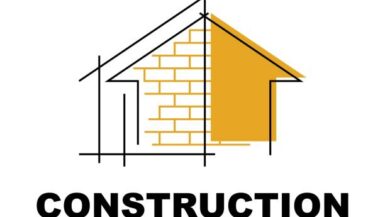Introduction
Construction sites are bustling with activity, and safety is of paramount importance. One essential piece of safety equipment that has become synonymous with construction work is the construction hat, also known as a hard hat. In this article, we will explore the significance of construction hats, their evolution, and why they are a crucial accessory for workers in various industries.
Table of Contents
- The History of Construction Hats
- Early Beginnings of Head Protection
- The Introduction of Hard Hats
- Advancements in Modern Construction Hats
- Why Construction Hats are Essential
- Protection Against Falling Objects
- Impact Protection
- Electrical Hazard Protection
- Types of Construction Hats
- Type I vs. Type II
- Class E vs. Class G vs. Class C
- Choosing the Right Construction Hat
- Proper Fit and Adjustments
- Material Considerations
- Additional Safety Features
- Caring for Your Construction Hat
- Cleaning and Maintenance
- Inspecting for Damage
- Proper Storage
- Construction Hats for Specific Industries
- Construction and Building Sites
- Oil and Gas Industry
- Electrical and Power Sector
- Construction Hat Accessories
- Sweatbands and Chin Straps
- Reflective Decals and Strips
- Customizing Your Hard Hat
- The Psychological Impact of Construction Hats
- Confidence and Identity
- Team Spirit and Unity
- Symbol of Professionalism
- Trendy Construction Hats: Balancing Safety and Style
- Personalized Hard Hats
- Colorful Designs and Graphics
- Branded Hard Hats
- Construction Hats: Regulations and Standards
- Occupational Safety and Health Administration (OSHA) Standards
- American National Standards Institute (ANSI) Certification
- Compliance and Enforcement
- The Future of Construction Hats
- Technological Advancements
- Smart Hard Hats
- Sustainable Materials
The History of Construction Hats
Early Beginnings of Head Protection
Head protection dates back centuries when laborers used various materials like leather, straw, and even metal to shield their heads from falling objects. These primitive helmets laid the foundation for the modern construction hat.
The Introduction of Hard Hats
In the mid-20th century, hard hats as we know them today were introduced. Made from reinforced materials like fiberglass and thermoplastics, these hats offered superior protection against impacts and falling debris.
Advancements in Modern Construction Hats
With advances in engineering and material sciences, modern construction hats have evolved to meet specific industry needs. Today, hard hats are designed to withstand extreme conditions while providing optimal comfort and protection.
Why Construction Hats are Essential
Protection Against Falling Objects
One of the primary purposes of a construction hat is to shield workers from falling objects, such as tools, bricks, or debris, that may pose a significant risk on construction sites.
Impact Protection
Construction sites can be hazardous environments, and accidental falls or bumps are common. A construction hat’s impact resistance reduces the risk of head injuries.
Electrical Hazard Protection
For workers exposed to electrical hazards, certain construction hats are designed to provide protection against electric shocks, ensuring the safety of electricians and others in similar professions.
Types of Construction Hats
Type I vs. Type II
Type I construction hats offer protection from top impacts, while Type II hats provide added protection from lateral impacts.
Class E vs. Class G vs. Class C
Construction hats are categorized based on their electrical resistance. Class E hats are rated for electrical hazards up to 20,000 volts, Class G for up to 2,200 volts, and Class C offers no electrical protection.
Choosing the Right Construction Hat
Proper Fit and Adjustments
A well-fitted construction hat ensures maximum safety. Workers should follow guidelines for adjustments to minimize the risk of the hat falling off during work.
Material Considerations
Construction hats are available in various materials, each offering specific advantages in terms of durability, weight, and resistance to heat and chemicals.
Additional Safety Features
Some construction hats come with additional features, such as extended brims and ventilation, to enhance protection and comfort in specific work environments.
Caring for Your Construction Hat
Cleaning and Maintenance
Regular cleaning and maintenance of construction hats ensure they remain in optimal condition and free from dirt or debris.
Inspecting for Damage
Regularly inspecting construction hats for cracks, dents, or signs of wear is vital to guarantee their integrity.
Proper Storage
Storing construction hats in a dry and cool place away from direct sunlight helps prolong their lifespan and effectiveness.
Construction Hats for Specific Industries
Construction and Building Sites
Construction hats are a staple on construction sites, protecting workers from potential hazards.
Oil and Gas Industry
Workers in the oil and gas sector wear specialized construction hats designed to resist flammable substances and withstand extreme temperatures.
Electrical and Power Sector
In the electrical and power industry, construction hats with electrical insulation properties are a must to protect against electric shocks.
Construction Hat Accessories
Sweatbands and Chin Straps
Sweatbands enhance comfort and absorb moisture, while chin straps secure the hat during windy conditions or when working at heights.
Reflective Decals and Strips
Reflective decals and strips improve visibility, especially in low-light conditions, reducing the risk of accidents.
Customizing Your Hard Hat
Customizing construction hats with logos, names, or other designs fosters a sense of identity and pride among workers.
The Psychological Impact of Construction Hats
Confidence and Identity
Wearing a construction hat instills confidence in workers, signifying their role and responsibilities on the job site.
Team Spirit and Unity
Uniform construction hats promote a sense of unity and belonging within work teams.
Symbol of Professionalism
Construction hats are symbolic of professionalism, signifying a commitment to safety and adherence to industry standards.
Trendy Construction Hats: Balancing Safety and Style
Personalized Hard Hats
Personalization options allow workers to add their unique touch to their construction hats.
Colorful Designs and Graphics
Vibrant and eye-catching designs not only add style but also improve visibility on busy work sites.
Branded Hard Hats
Branded hard hats featuring company logos foster a sense of loyalty and pride among employees.
Construction Hats: Regulations and Standards
Occupational Safety and Health Administration (OSHA) Standards
OSHA sets the guidelines for construction hat safety and usage in the workplace.
American National Standards Institute (ANSI) Certification
ANSI certifies construction hats that meet specific safety and performance criteria.
Compliance and Enforcement
Adhering to construction hat regulations is essential to ensure the safety and well-being of workers and avoid potential penalties.
The Future of Construction Hats
Technological Advancements
With the ongoing integration of technology, construction hats may include features such as communication devices and sensors for real-time safety monitoring.
Smart Hard Hats
Smart hard hats could potentially provide data on workers’ vital signs and alertness, ensuring prompt intervention in emergencies.
Sustainable Materials
As sustainability becomes a priority, the development of eco-friendly construction hat materials is on the horizon.
Conclusion
Construction hats play a crucial role in protecting workers from potential hazards on construction sites and other dangerous workplaces. With a wide variety of options available, workers can choose construction hats that suit their specific needs and preferences. As technology continues to advance, we can look forward to smarter and more sustainable construction hat solutions that prioritize safety without compromising style and comfort.





Leave a reply